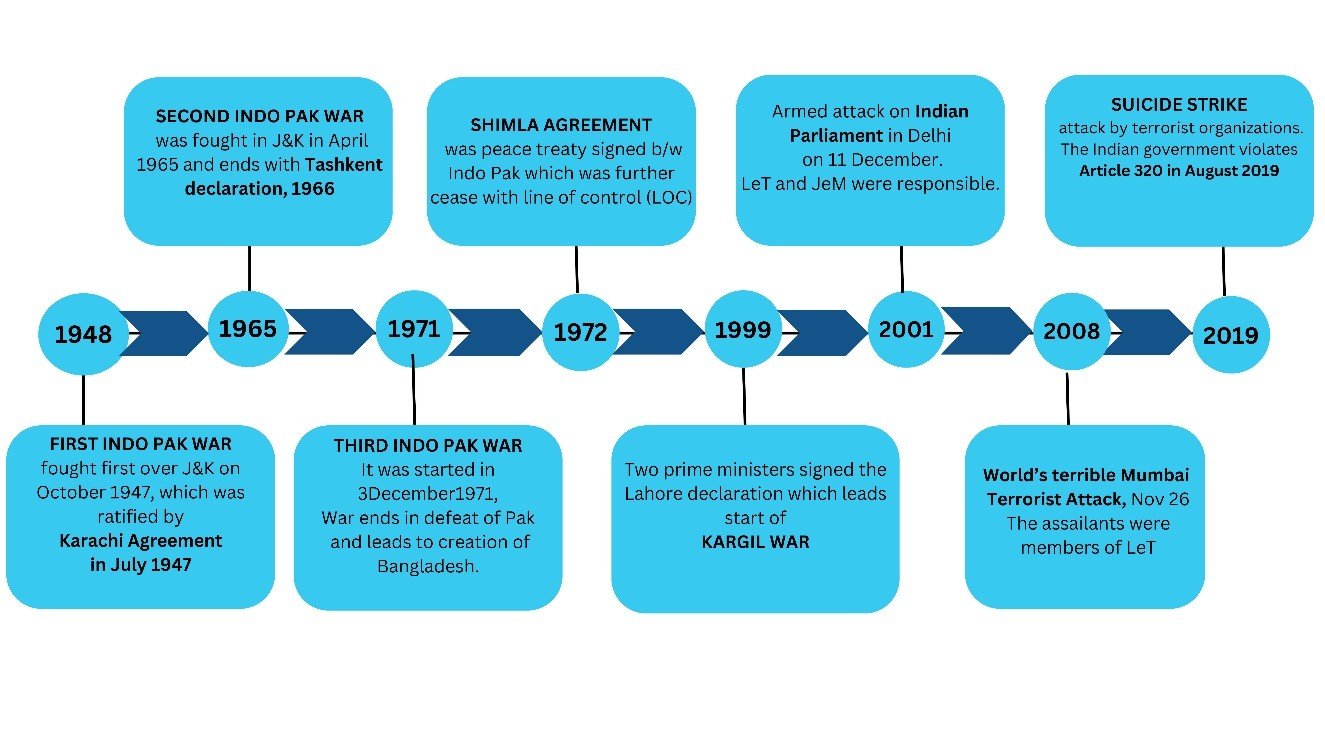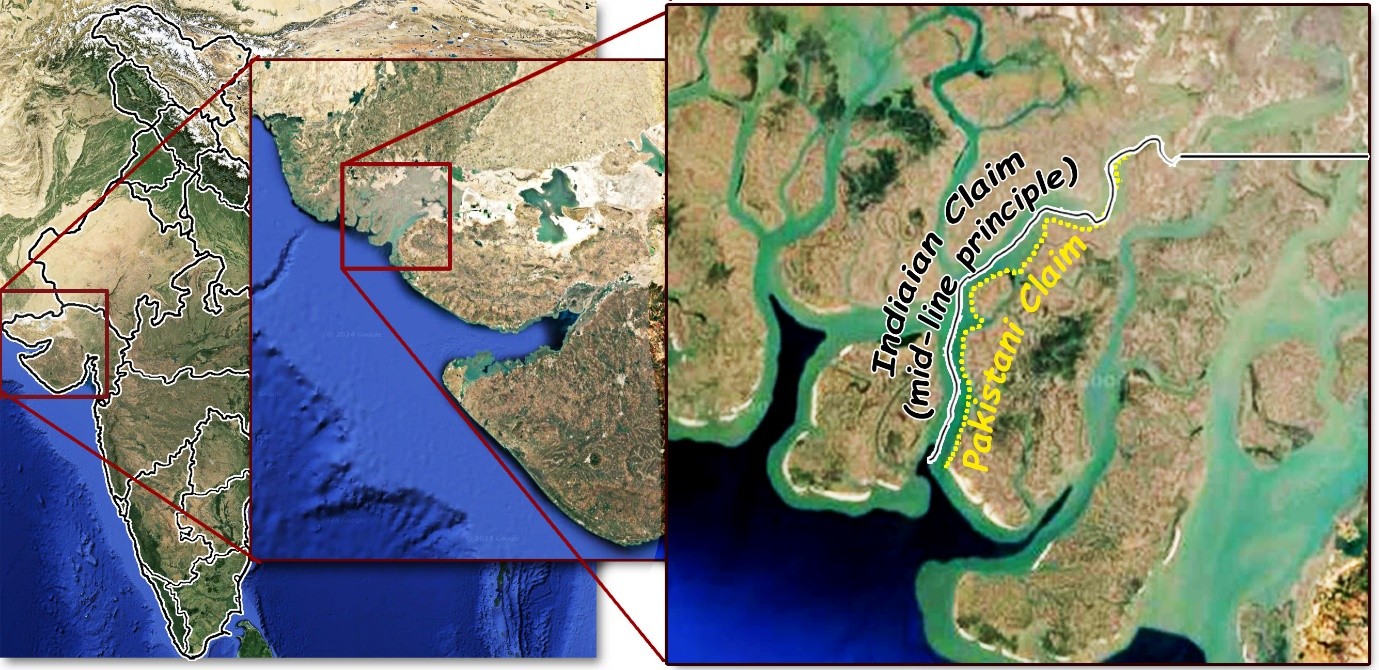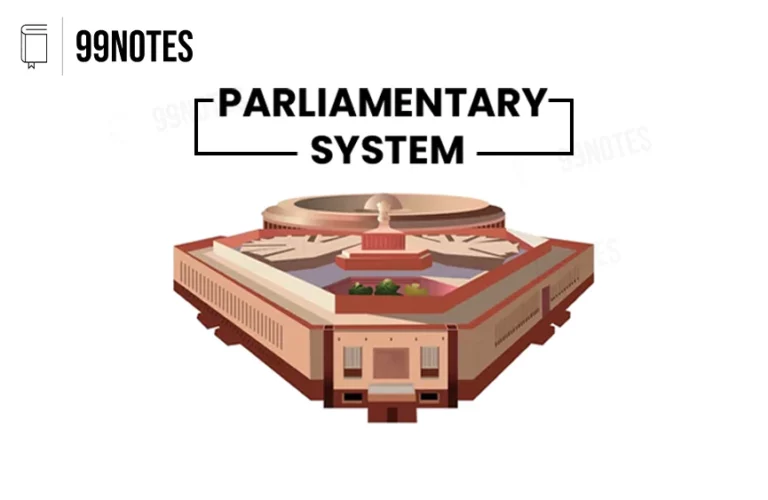India Pakistan Relations
India and Pakistan share historical and civilizational linkages. We can trace the historical connection in the Indus Valley civilisation, which was spread in both countries. Both were politically united under British India until the partition in 1947. India and Pakistan’s relationship has faced various ups and downs, thus often cited as a complex relationship. Mistrust has affected their relationship as both have fought four wars since independence in 1947-48, 1965,1971 and 1999.
A series of conflicts, territorial disputes, and political tension mark the history of their ties. Despite their geographical proximity, the relationship between India and Pakistan has been strained since the Partition.
Issues in India and Pakistan Relations
Conflict between India and Pakistan:
Despite having linguistic, geographical, cultural and economic links, the relationship has a history of conflicts.
- The Partition of India was outlawed in the Indian Independence Act of 1947. It was one of the greatest human migration tragedies in history. It resulted in violent killings of migrants throughout the subcontinent.
- India and Pakistan have fought four wars since they got independence from the British Empire in 1947.
- Since then India has fought four wars with Pakistan on different issues.
Timeline of the conflict between India and Pakistan:
The Kashmir Issue
Kashmir is one of the most contentious topics between India and Pakistan. It is a major source of friction between the two nations.
| Kashmir Issue |
|
Siachen Glacier
Siachen Glacier is situated in the Karakoram Range of Northern Ladakh. It is the Second Largest Glacier in the World. Siachen has an altitude of 6000 metres and is inhabitable. Therefore, historically the armies of the two countries had been withdrawing from such heights, despite the issue of the demarcation of the Siachen Glacier.
There have been three agreements between India and Pakistan as follows:
- the Karachi Agreement of 1949 (After the India-Pak war of 1947-48),
- the Tashkent Agreement (After the 1965 war) and
- the Shimla Agreement (post the 1971 war).
However, none of the three agreements demarcate, on the ground, the Line of Control (LoC) beyond Point NJ 9842 in present-day Ladakh.
The 1949 agreement said, “From Point NJ 9842, the ceasefire line (CFL) will run northwards to the glaciers.” India and Pakistan differ on what defines “northwards to the glaciers”.
- India claims the LoC runs northward from the point NJ 9842 along the Saltoro ridge (keeping all of the glaciers in the Indian domain).
- Islamabad claims that the LoC should go north-east and end at Karakoram Pass, dividing Ladakh and Xinjiang, under Chinese control.
In 1984, India launched Operation Meghdoot to permanently occupy the glacier, effectively settling the issue by force.
| Operation Meghdoot |
|
Ceasefire Violations and Cross-Border Terrorism
This has been a major area of mistrust between India and Pakistan. Pakistan has always been involved in anti-India propaganda. It can be explained as:
- After the Kargil Conflict, the 2003 Ceasefire Agreement came into effect. Despite this, Pakistan has been engaged in regular ceasefire violations. These ceasefire violations have led to multiple casualties of the army and civilians in both countries.
- Besides ceasefire violations, Pakistan supports state-sponsored terror attacks on India, which have also been a significant issue.
- In Cross Border Terrorism, the Mumbai Terror Attacks on November 26, 2008, resulted in the death of 160 people.
- The Indian Government responded with massive retaliation in the 2016 surgical strikes and the 2019 Balakot airstrikes after the terror attacks.
| Bleed India with Thousand Cuts |
| Pakistan through its intelligence agency ISI has sponsored Terrorism for a long time. It seems that it aims to bleed India with a thousand cuts and slow our economic modernisation.
After four conventional wars, it has been established that Pakistan cannot counter India in a direct war. Therefore, it is now resorting to low–intensity warfare, that involves: 1. Sporadic terrorist strikes to spread terror and panic. 2. The flooding of the country with counterfeit currency. 3. Supply arms and explosives to all kinds of militants in India (including Naxalites & North East Insurgents) 4. Spread communal hatred and violence – an information warfare. Examples of Thousand cuts:
Role of Mohammed Masood Azhar Alvi: He arrived in India in 1994 with the task of working out the reconciliation and consolidation of the cadre of different organizations. He also interacted extensively with the leading figures of the Deoband Ulema. He was arrested but then released and handed over by India to the Taliban at Kandahar in exchange for IC-814 hijacking hostages. This incident raised the spirit of the terrorists and thousands were recruited in the terrorist camps based in Pakistan-occupied Kashmir (POK). Often Indian gangsters like Daud Ibrahim helped to arrange for weapons. We will read about the Modus Operandi of such terror financing in the Internal Security book in Detail. |
Sir Creek Dispute
It is a 96-km estuary in the Rann of the Kutch region. It lies between Sindh of Pakistan and Gujarat of India. The area of Sir Creek has not been demarcated between India and Pakistan by a clearly delineated maritime border.
- Pakistan claims the entire Sir Creek to be its own based on the Sindh Government resolution of 1914, which had been signed between the Rulers of Kutch and the Government of Sindh. According to this resolution, the creek became part of Sindh.
- However, India rejected the claim saying that the whole area was part of Bombay’s presidency at that time. Thus, the 1914 resolution sought to demarcate Sir Creek between the Sindh and Kutch divisions of the Bombay state as an internal administrative measure.
- According to the Indian argument, Sindh and Kutch became part of two independent nations after independence, thus their maritime boundary now needed to be settled as per international norms, mainly the Thalweg Doctrine, which follows the meridian principle. Thus, India claims that the boundary lies mid-channel. Also, in another fact Bombay Government adopted a resolution in 1925 in which it installed mid-channel pillars in Sir Creek. Thus, according to the 1925 map India claims mid-channel as the maritime boundary between India and Pakistan.
Neither of the countries is willing to give away the creek to others which would lead to the loss of an excessive amount of Exclusive Economic Zone which is rich in mineral deposits and gas.
Issues in the Indus Waters Treaty
Due to the lack of a definite dispute redressal solution, India and Pakistan have taken the path of international arbitration which increases the time and cost.
| Indus Water Treaty |
| The Indus Water Treaty is an agreement to use the water available in the Indus River and its five major tributaries. It was signed between India and Pakistan on 19th September 1960. However, it came into force on April 1, 1960. (Effective Date). It was negotiated by the World Bank. Some of the provisions of the treaty are as follows:
Control of the rivers:
Transitory Provisions: In a 10-year transition period India was bound to supply water to Pakistan until it was able to build a canal system from western rivers. Pak also received one-time financial compensation for the loss of water from eastern rivers. Usage of water:
Pakistan’s rights:
The permanent Indus Commission was constituted by permanent commissioners on both sides. The functions of the commission include serving as a forum for the exchange of information on the rivers, for continued cooperation and as a first stop for resolution of conflicts.
Conflict resolution: The IWT also provides a three-step dispute resolution mechanism, under which issues can first be resolved at the commission or intergovernmental level.
|
Disagreements on the Indus Water Treaty:
- Frequent opposition to Indian projects by Pakistan: On the basis of technical criteria, Pakistan raises opposition to the Indian projects. For example, Pakistan raised opposition to the Kishanganga Hydroelectric Project (KHEP) on the Jhelum River and the Ratle Hydroelectric Project on the River Chenab.
- Other Disputes in the Past:
- Salal Hydropower Project was objected to in the 1970s but later withdrawn in 1978.
- The Baghliar Hydropower Project was objected to in the 2000s which was resolved after some mediation.
- Several other objections have been raised too.
- Change in the timing and intensity of the precipitation due to climate change is not accounted for in the Treaty. Thus, it is unable to ensure equitable water allocation. Further illegal intervention in the flow of rivers is prohibited. However, it is difficult to find whether the low flow is caused by illegal restrictions or climate variability.
Trade issue:
- Trade relations between the two countries have been negatively impacted by political tensions and the trust deficit. Pakistan has imposed several non-tariff barriers that restrict Indian exports.
- India increased customs duties on all goods that are imported from Pakistan to 200% after the Pulwama terror attack in 2019. It also revoked Pakistan’s Most Favoured Nation (MFN) status. Pakistan thereafter suspended all bilateral trade with India.
Areas of Cooperation between India and Pakistan
Hydro-diplomacy:
The role of hydro-diplomacy as part of a peacebuilding process is crucial for countries like India and Pakistan that are susceptible to wars. The Indus Water Treaty was adopted to increase trust concerning the distribution of the Indus River.
Trade and commerce
Trade has always played an important role in bilateral relationships and has been a two-way bridge that strengthens friendly relations. Therefore, normalising trading relations with Pakistan is an important component of India’s policy of overall normalisation of bilateral relations.
- India exported $1.88B to Pakistan in 2022. The main products that India exported to Pakistan were Raw Sugar, Vaccines, blood, toxins and cultures, and Nitrogen Heterocyclic Compounds ($47.1M).
- Pakistan exported $446M to India in 2022. The main products that Pakistan exported to India were Passenger and Cargo Ships, Tropical Fruits and Other Oily Seeds.
Cultural Relations
India and Pakistan share civilizational linkages. They share a common history before partition. Following are the various cultural linkages between India and Pakistan:
- North-west India and Eastern Pakistan share common cultures, languages and cuisines due to their Indo-Aryan linkages, fostering historical ties between the two nations.
- Pakistani entertainers, including musicians, actors, and singers, are popular in India, while Indian music and films have gained popularity in Pakistan.
- Punjabi people form significant ethnic groups in both countries. Likewise, many Hindu Sindhis migrated to India in 1947, forming a substantial Sindhi community there.
- Guru Nanak, the founder of Sikhism, was born in Punjab, Pakistan. It attracts millions of Indian Sikh pilgrims visiting holy sites in Nankana Sahib each year.
- The Muhajir community are Muslims who migrated from India to Pakistan during independence, predominantly settled in Karachi while maintaining family links in India.
- The “Aman ki Asha” campaign, i.e. media and communication platforms promoting mutual peace and cultural relations, is jointly run by The Times of India and the Jang Group.
People-to-People Relations
- In 1974, India and Pakistan signed the Bilateral Protocol on Visits to Religious Shrines, which allowed pilgrimages from both sides to visit religious places. This protocol allows five Pakistani pilgrimages to visit seven shrines in India, while three Hindu pilgrimages and four Sikh pilgrimages visit fifteen sites in Pakistan each year.
- India advised Pakistan to reactivate the Joint Judicial Committee in 2017 for the humanitarian needs of fishermen and prisoners. Over the last five years, 30 civilian prisoners and 2080 fishermen have been released. The fishermen issue is dealt with in detail in the Indo-Srilanka Relations
- The Kartarpur Saheb Corridor Initiative aims to ease Indian pilgrims’ access to Gurudwara Kartarpur Saheb in Pakistan, which India initiated in 2018.
Multilateral Cooperation Between India and Pakistan
India engages with Pakistan on various multilateral organisations like the South Asian Association for Regional Cooperation (SAARC), Shanghai Cooperation Organization (SCO), etc.
Way Forward
- India’s Neighbourhood First Policy: Emphasizes the importance of normal relations with neighbouring countries, notably Pakistan It can be done by prioritising peaceful bilateral resolution, and advocating the elimination of terrorism and violence. Also, calls for Pakistan to create a conducive environment for constructive dialogue.
- National Security Stance: India should continue to maintain resolute action against threats to security and territorial integrity.
- Religious Diplomacy: The future of India-Pakistan relations requires a thoughtful engagement with the religious tradition. i.e., the Kartarpur Corridor was initiated in 2018, enabling Indian devotees’ access to Gurdwara Kartarpur Sahib in Pakistan.
- Turning Tragedy into Opportunity: Reports of protests in Pakistan-Occupied Kashmir (PoK) raise concerns about the potential for law-and-order issues and refugee influx. However, activists report protests in PoK with readiness to join India, which presents an opportunity to address regional instability and potentially expand its influence.
- Potential for Revival of SAARC: The deadlock in fostering greater cooperation among SAARC members is often attributed to the rivalry between Pakistan and India. However, with India’s increasing global prominence and Pakistan’s decline, SAARC’s revival becomes feasible. The revival of SAARC can aid India’s neighbourhood policy in addressing the regional strategic encroachment posed by China’s Belt and Road Initiative.
- Diplomatic Opportunities for India: Insists on conditions for formal talkswith Pakistan. Emphasizes the importance of concrete actions to address security concerns before engaging in substantive dialogue.
Soft Power Dimensions for India-Pakistan Relations |
|
Conclusion
Fostering better relations between India and Pakistan is imperative for regional stability and global peace, considering the nuclear capabilities of both nations. With the border tensions persisting, Pakistan needs to demonstrate its commitment to combating terrorism and promoting peace in the region. Policymakers should focus on promoting dialogue, confidence-building measures, and mutual cooperation in areas such as trade, energy, and counter-terrorism.









